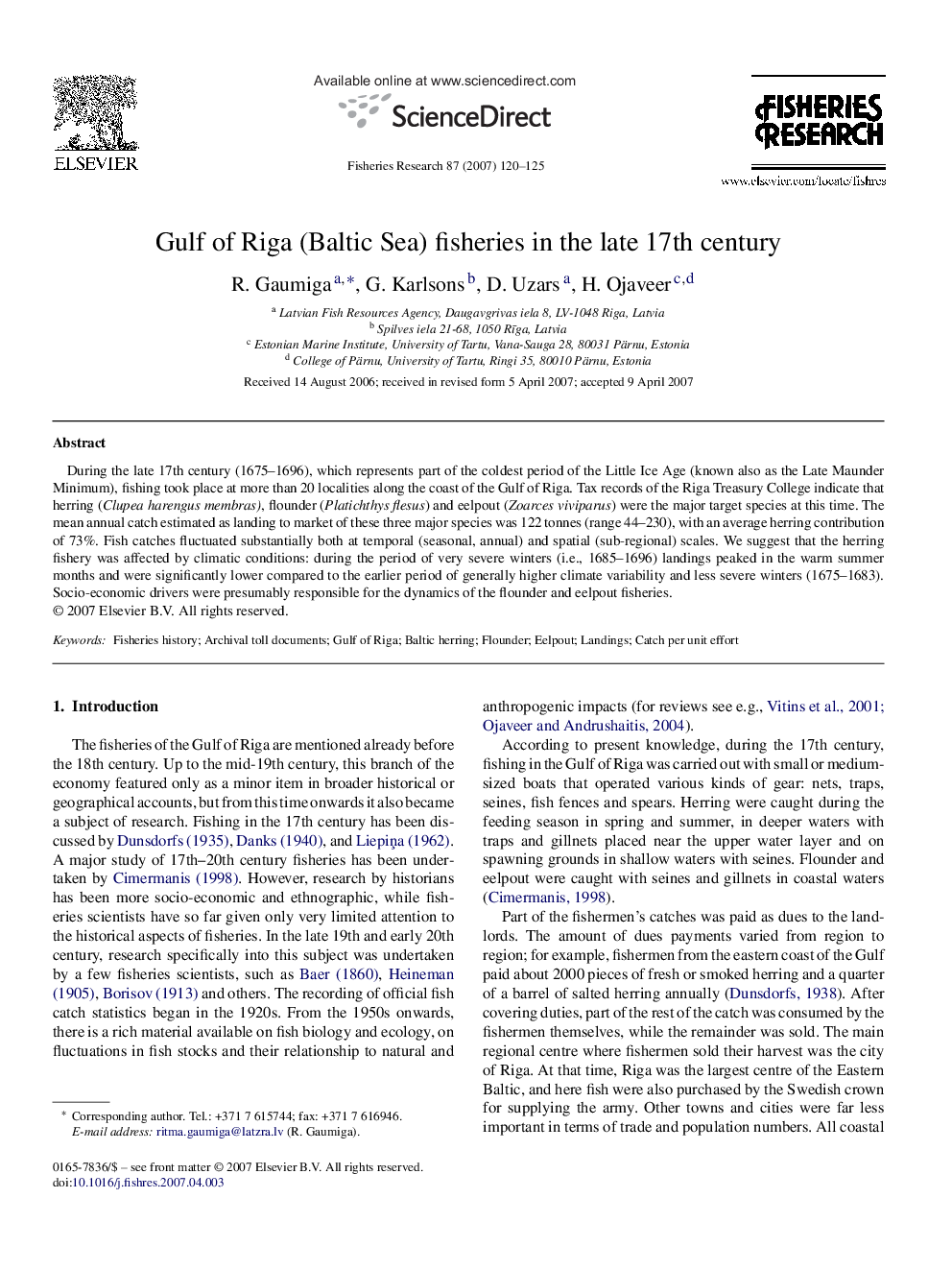| کد مقاله | کد نشریه | سال انتشار | مقاله انگلیسی | نسخه تمام متن |
|---|---|---|---|---|
| 4544625 | 1626863 | 2007 | 6 صفحه PDF | دانلود رایگان |
عنوان انگلیسی مقاله ISI
Gulf of Riga (Baltic Sea) fisheries in the late 17th century
دانلود مقاله + سفارش ترجمه
دانلود مقاله ISI انگلیسی
رایگان برای ایرانیان
کلمات کلیدی
موضوعات مرتبط
علوم زیستی و بیوفناوری
علوم کشاورزی و بیولوژیک
علوم آبزیان
پیش نمایش صفحه اول مقاله

چکیده انگلیسی
During the late 17th century (1675-1696), which represents part of the coldest period of the Little Ice Age (known also as the Late Maunder Minimum), fishing took place at more than 20 localities along the coast of the Gulf of Riga. Tax records of the Riga Treasury College indicate that herring (Clupea harengus membras), flounder (Platichthys flesus) and eelpout (Zoarces viviparus) were the major target species at this time. The mean annual catch estimated as landing to market of these three major species was 122Â tonnes (range 44-230), with an average herring contribution of 73%. Fish catches fluctuated substantially both at temporal (seasonal, annual) and spatial (sub-regional) scales. We suggest that the herring fishery was affected by climatic conditions: during the period of very severe winters (i.e., 1685-1696) landings peaked in the warm summer months and were significantly lower compared to the earlier period of generally higher climate variability and less severe winters (1675-1683). Socio-economic drivers were presumably responsible for the dynamics of the flounder and eelpout fisheries.
ناشر
Database: Elsevier - ScienceDirect (ساینس دایرکت)
Journal: Fisheries Research - Volume 87, Issues 2â3, November 2007, Pages 120-125
Journal: Fisheries Research - Volume 87, Issues 2â3, November 2007, Pages 120-125
نویسندگان
R. Gaumiga, G. Karlsons, D. Uzars, H. Ojaveer,